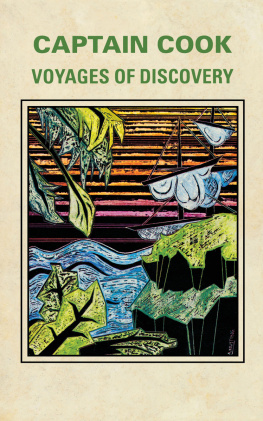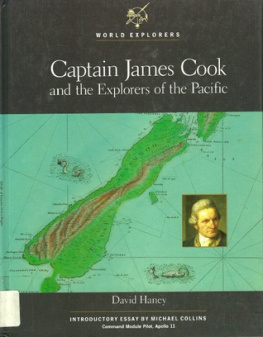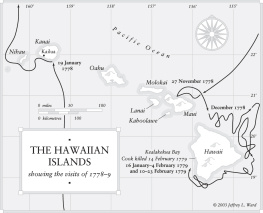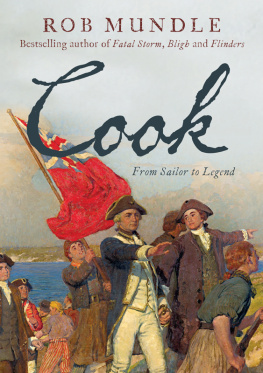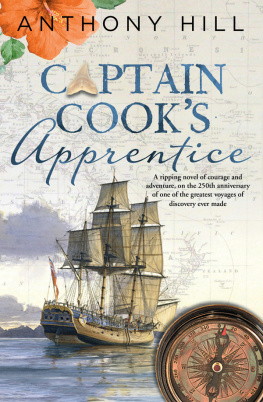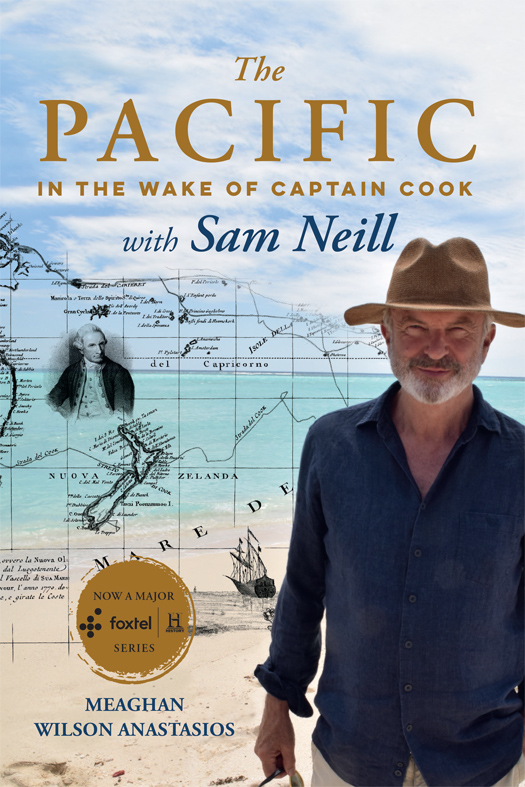CONTENTS
Guide
HarperCollinsPublishers
First published in Australia in 2018
by HarperCollinsPublishers Australia Pty Limited
ABN 36 009 913 517
harpercollins.com.au
Copyright Essential Media Entertainment Pty Ltd and Meaghan Wilson Anastasios 2018
The right of Essential Media Entertainment Pty Ltd and Meaghan Wilson Anastasios to be identified as the authors of this work has been asserted by them in accordance with the Copyright Amendment (Moral Rights) Act 2000.
This work is copyright. Apart from any use as permitted under the Copyright Act 1968, no part may be reproduced, copied, scanned, stored in a retrieval system, recorded, or transmitted, in any form or by any means, without the prior written permission of the publisher.
HarperCollinsPublishers
Level 13, 201 Elizabeth Street, Sydney, NSW 2000, Australia
Unit D1, 63 Apollo Drive, Rosedale 0632, Auckland, New Zealand
A 75, Sector 57, Noida, Uttar Pradesh 201 301, India
1 London Bridge Street, London SE1 9GF, United Kingdom
Bay Adelaide Centre, East Tower, 22 Adelaide Street West, 41st Floor, Toronto, Ontario, M5H 4E3, Canada
195 Broadway, New York, NY 10007, USA
ISBN: 978 1 4607 5639 3 (hardback)
ISBN: 978 1 4607 1036 4 (epub)
A catalogue record for this book is available from the National Library of Australia
Cover design by Hazel Lam, HarperCollins Design Studio
Cover images: Photo by Johanna Gibson, 2018, Essential Media & Entertainment; background map Nuova Guinea e Nuova Galles ed isole adjacente, Zatta, Antonio, active 1757-1797, courtesy National Library of Australia (Call No: MAP T 1432); Portrait of Captain James Cook courtesy State Library of Victoria (H1842); back-cover painting Captain Cook landing at Owyhee (Hawaii) courtesy Dixson Galleries, State Library of New South Wales (Call No: DGD 27)
Maps by Map Illustrations www.mapillustrations.com.au
I can only speculate at what Cooks motives might have been when he
embarked on his voyage because we dont get much from his logs. I can
only guess at his inner thoughts. But the fact he kept going back to the
Pacific he couldnt stay away shows he was completely taken by
the place. In the end, it wasnt just that he changed the Pacific... the
Pacific also changed him. He became a man of the Pacific.
*
Most of the voices we hear on Pacific are indigenous, and for me thats
important. The other side has been told so often its so familiar. The
great Cook who comes along and plants a flag followed by all the
benefits that come with European settlement. Law. Literacy.
Technology. The wheel! Weve heard it all before. But theres a whole
other side to the story many of us have never heard largely because
we havent been listening, and thats the indigenous story of the
Pacific. Hopefully, Pacific might help change this.
Sam Neill
by Sam Neill
W hen I was a boy there was a huge map on the classroom wall. It was a map of the world, and most of that map was coloured pink, which meant that it was British, the old British Empire. This was supposedly a very good thing, because it brought order, enlightenment and above all cricket to the darkest places of the world.
Well. That was then. And of course now... Im not sure of any of it.
That map was in large part pink as a result of the three voyages of the great explorer James Cook, at least in the third of the planet we call the Pacific. Cooks journeys, and the course of his reputation, particularly in Australia and New Zealand, fascinate me. Cook of course didnt actually discover anything everywhere he went had been discovered by other people hundreds, sometimes thousands, of years before him, though this certainly didnt deter the Europeans who followed in his wake. Which meant that most of the Pacific was eventually colonised, and thus our map, much of our corner of the world, was pink.
But for me, this has been a journey of discovery; the result being this book, as written by Meaghan Wilson Anastasios, and TV series. More than that, I think they became a love letter to my part of the world. I am more grateful than ever for growing up here, for being part of this place. I love this vast blue hemisphere.
Much of what we found on this voyage was new to me. For instance, I was not a little taken aback at the disparity of opinions on Cook: he is utterly loathed in some quarters, and yet adored in others. The project evolved, and became a story of an ocean as much as a story of people. Its as much about the present as it is about history. Its as much about me, I suppose, as it is about Cook Cook being someone of enormous stature, and me... not particularly of any stature at all.
It is 250 years since Cook first sailed into this immense ocean, since those first fateful encounters. So perhaps it was no coincidence that even while we were shooting the series, the impending commemorations meant increasing controversy. How should we remember Cook? What are we to make of his claiming these lands for the Crown? How responsible was Cook himself for the devastating consequences of his discoveries for the peoples who had populated the Pacific for so long the people who had actually discovered and settled in this ocean?
And those original peoples for all Cooks magnificent achievements and his consummate seamanship how extraordinary were they? My own family now is in part Mori, so I have a particular and personal interest in the Polynesian diaspora their incredible navigational skills, their great knowledge of the Pacific, their survival. Cooks arrival put that survival into immediate risk.
Of particular fascination to me are those initial awkward, often funny, sometimes tragic first encounters. As in so many parts of the world, the arrival of Europeans was at best a puzzle. They looked like dead people. They must have had eyes in the backs of their heads since they paddled backwards. The reception by the Mori and Australian Aboriginal people could not have been more different in New Zealand they were met with curiosity, hostility and often generosity. In many of the encounters in Australia, by contrast, the Indigenous people either retreated into the bush, or carried on with their lives completely ignoring these intruders. It was as if they were invisible. In Tahiti, Alaska and Hawaii... thats another story again.
But heres the thing about Cook, the navigator he always knew where he was. And for good or bad, he drew that map. And that map changed history.
Its been a privilege, as well as an education, to sail in his wake.
Here a disclaimer: Im not a historian, Im not a sailor, Im not a navigator, Im not an expert at anything much, Im just a winemaking actor but I am vitally interested, and I hope that you will be interested too. So follow me while I follow Cook. And just remember nothing is definitive, nothing is written in stone, make up your own mind, dont take my word for it!
There are many people to thank here. Essential Medias Chris Hilton, Frame Up Films Owen Hughes, Foxtel History Channels Jim Buchan, Duane Hatherly and Richard Stomps, and Prime TVs Annie Murray for their initial vision. The writers of the series Owen Hughes, Sally Aitken and Meaghan Wilson Anastasios, who also wrote this book. Please feel free to criticise any inaccuracies as their fault! The excellent directors Kriv Stenders and Sally Aitken; our Executive Producer, David Alrich; our doughty crew Jules OLoughlin, Mark Broadbent, Glenn Fitzpatrick, Ziggy Golden, Eamonn Dimmitt; the researchers who made it possible, Kirrilly Brentnall and Johanna Gibson; archive researchers Crystal Khoupraseuth and Penny Jope, the producers who kept us all in line, Aline Jacques and Joe Weatherstone; Indigenous consultants Larissa Behrendt in Australia and Annabelle Lee in New Zealand; the editors of the TV series, Karryn de Cinque and Adrian Rostirolla; and those close to me Ann Churchill Brown, Sophy Jones and Lauren Major.
Next page



